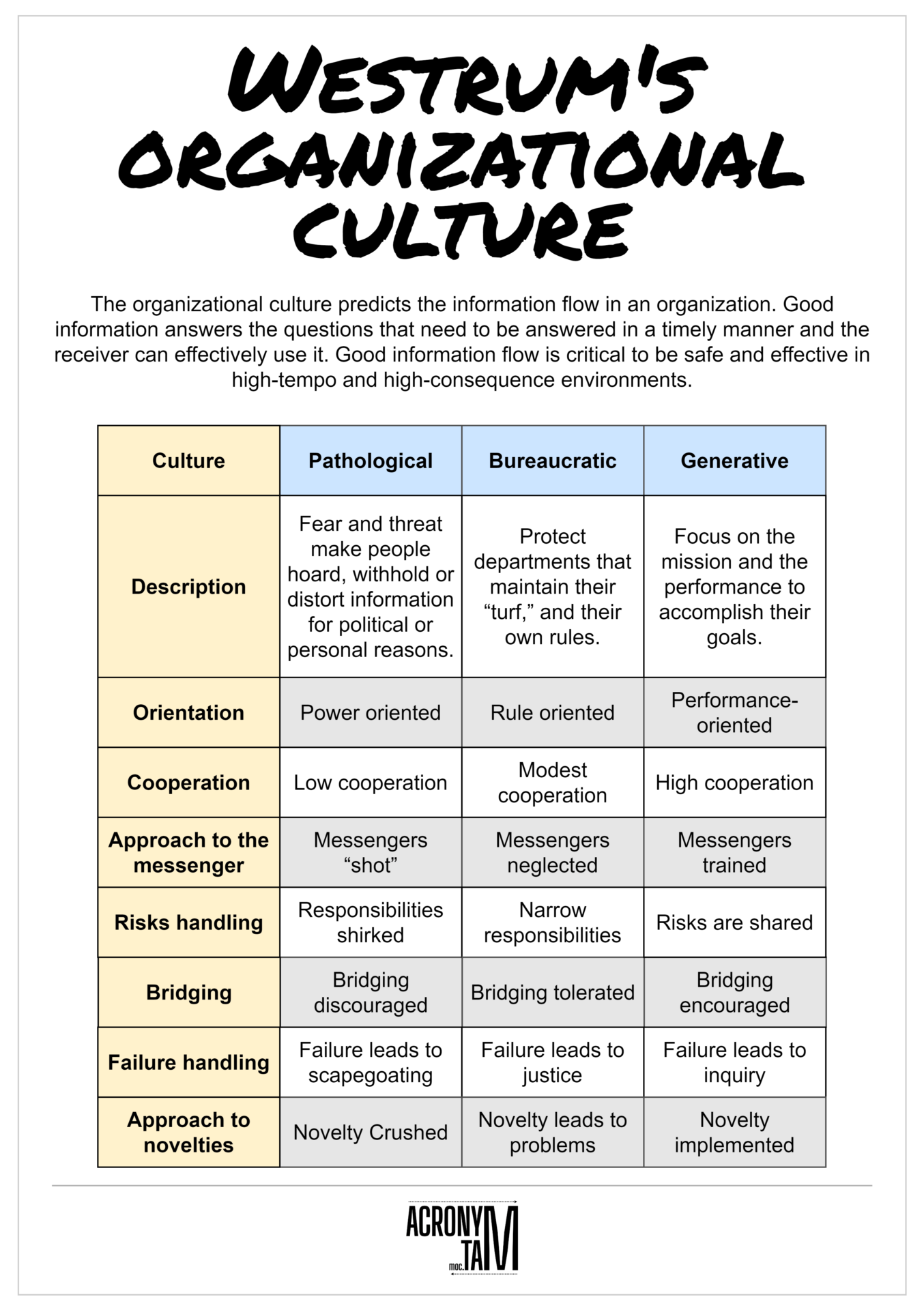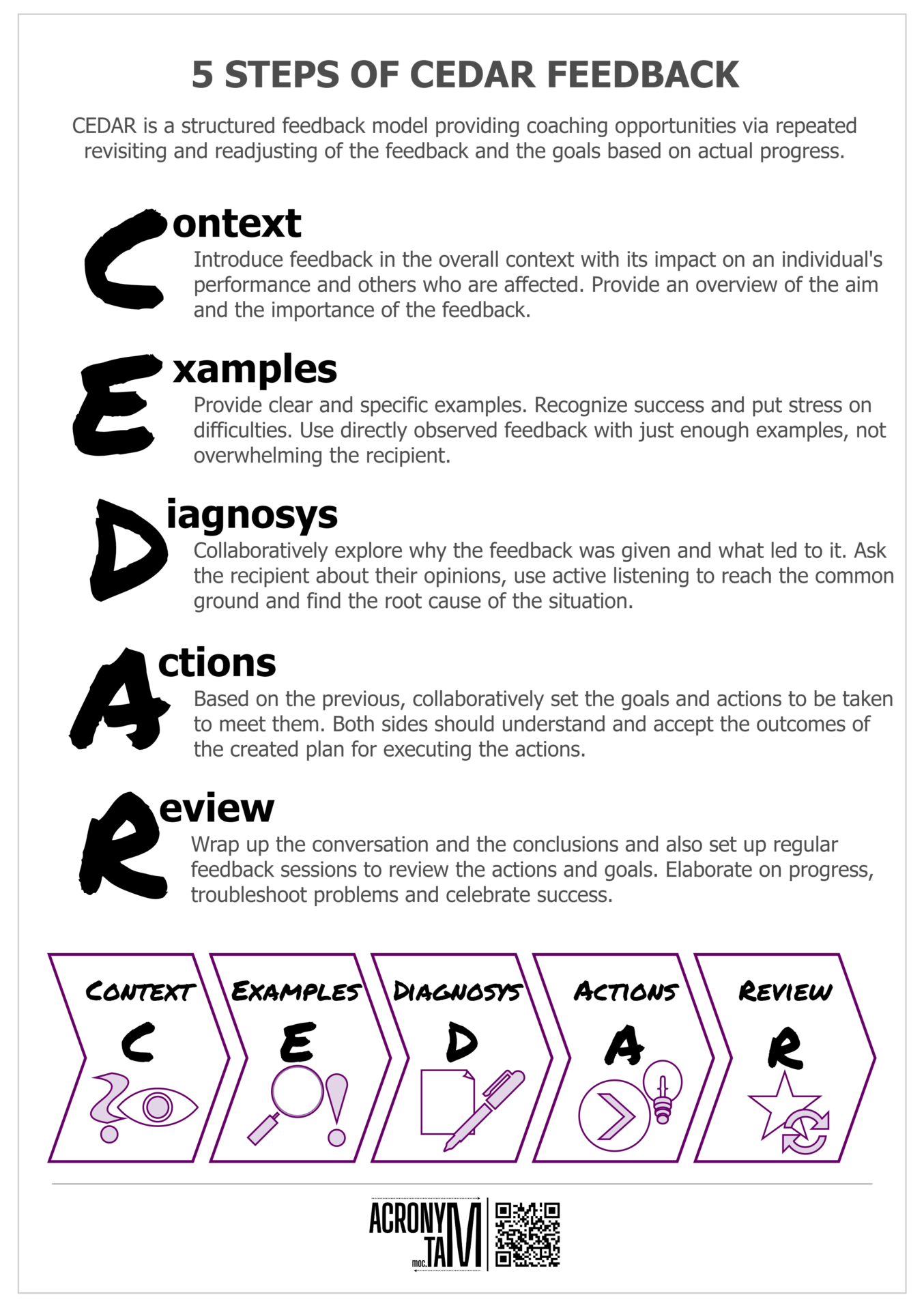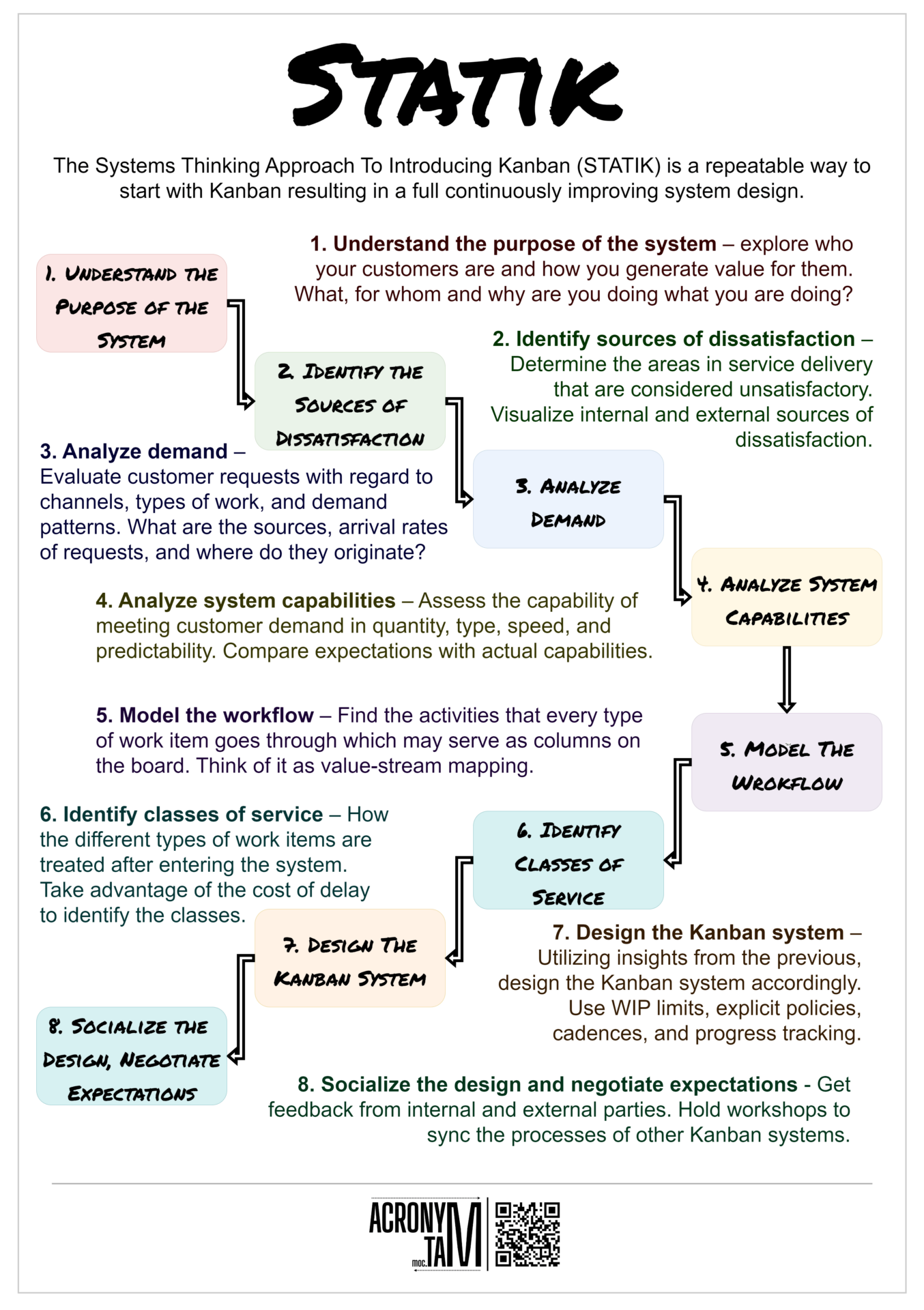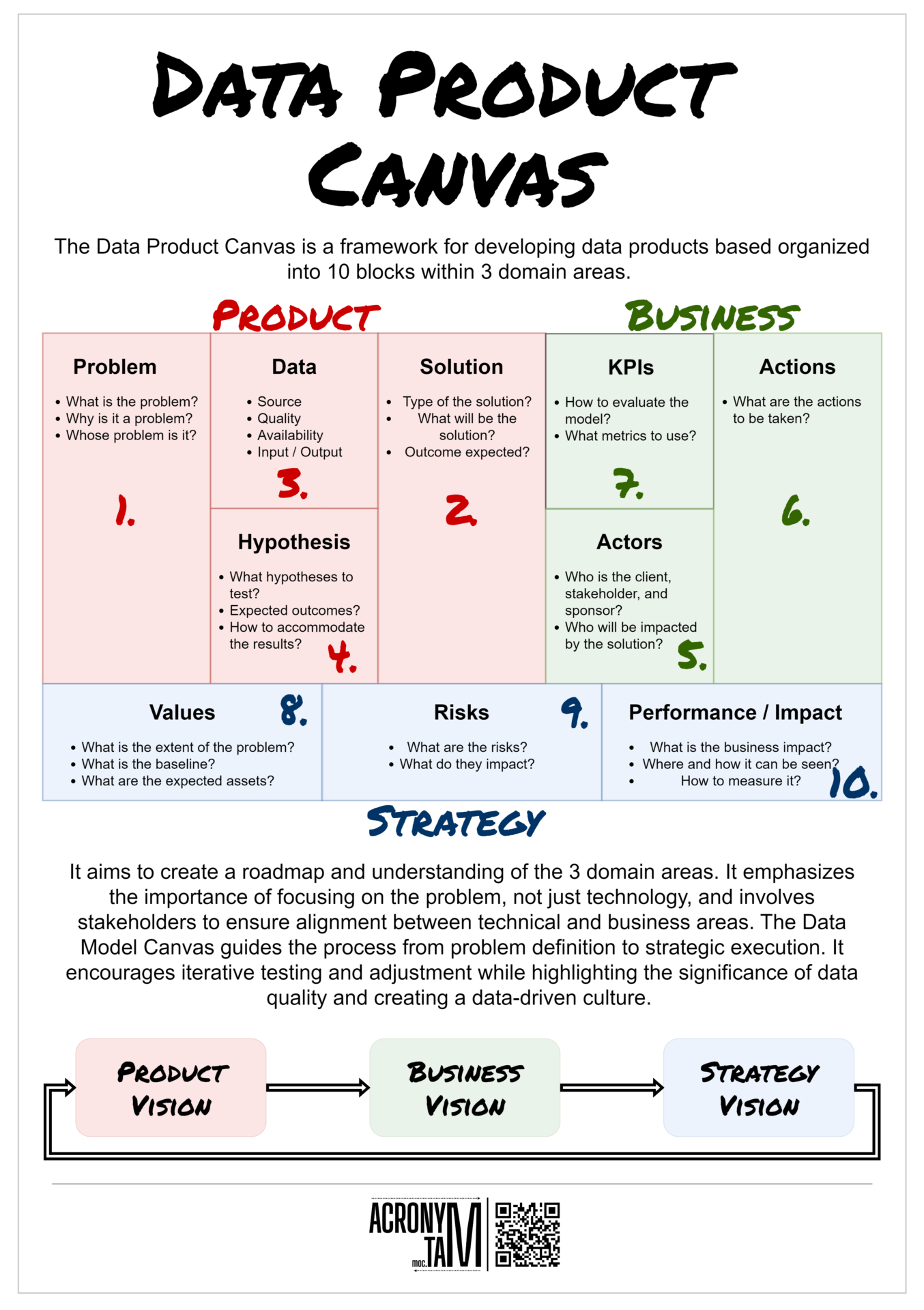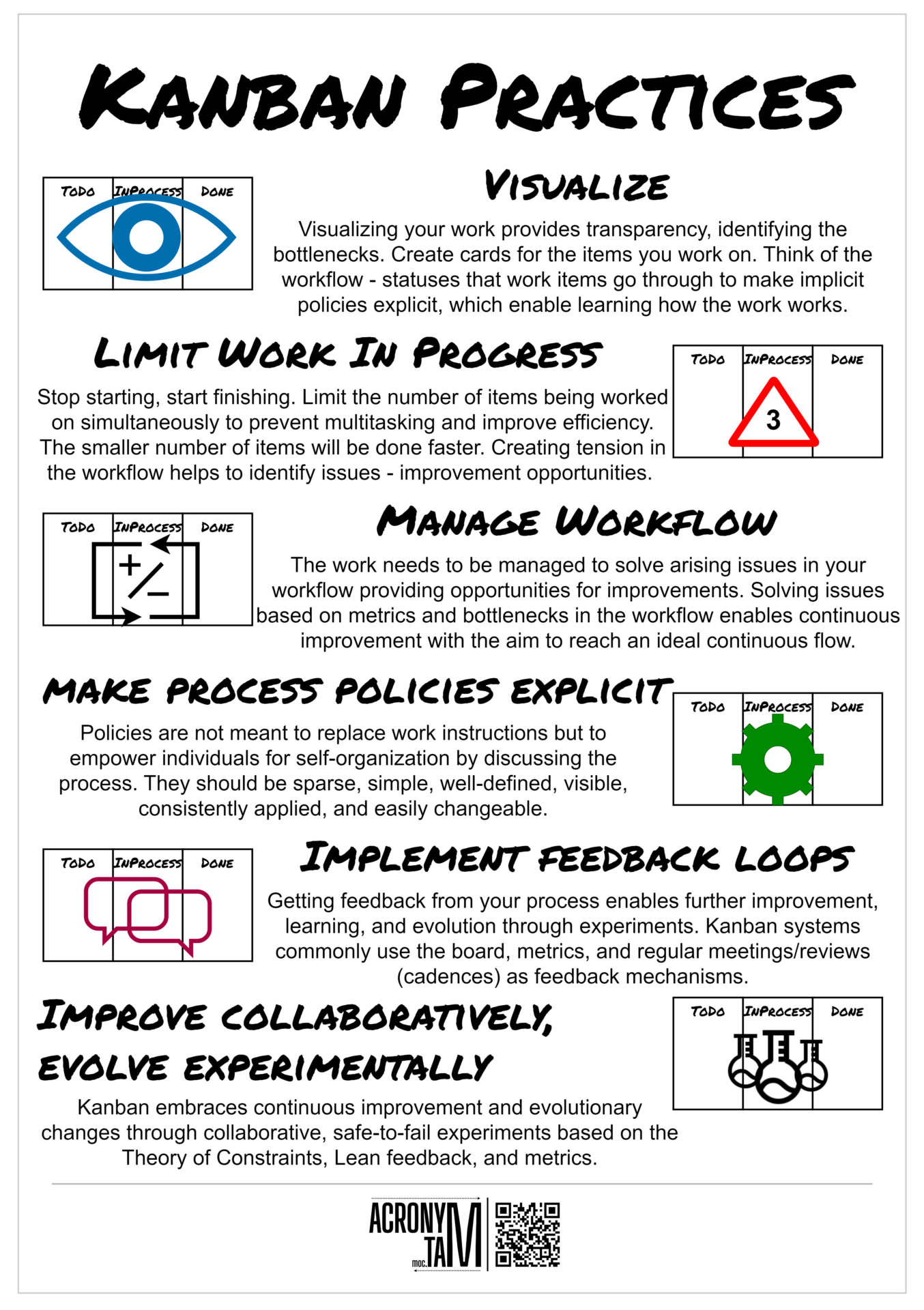Westrum Organizational Culture
Westrum Organizational Culture The organizational culture predicts the information flow in an organization. Good information answers the questions that need to be answered in a timely manner and the receiver can effectively use it. Good information flow is critical to be safe and effective in high-tempo and high-consequence environments. Culture Pathological Bureaucratic Generative Description Fear...
Read more
Article
Westrum Organizational Culture
The organizational culture predicts the information flow in an organization. Good information answers the questions that need to be answered in a timely manner and the receiver can effectively use it. Good information flow is critical to be safe and effective in high-tempo and high-consequence environments.
| Culture | Pathological | Bureaucratic | Generative |
|---|---|---|---|
| Description | Fear and threat make people hoard, withhold or distort information for political or personal reasons | Protect departments that maintain their “turf,” and their own rules | Focus on the mission and the performance to accomplish their goals |
| Orientation | Power oriented | Rule oriented | Performance-oriented |
| Cooperation | Low cooperation | Modest cooperation | High cooperation |
| Approach to the messenger | Messengers “shot” | Messengers neglected | Messengers trained |
| Risks handling | Responsibilities shirked | Narrow responsibilities | Risks are shared |
| Bridging | Bridging discouraged | Bridging tolerated | Bridging encouraged |
| Failure handling | Failure leads to scapegoating | Failure leads to justice | Failure leads to inquiry |
| Approach to novelties | Novelty Crushed | Novelty leads to problems | Novelty implemented |

